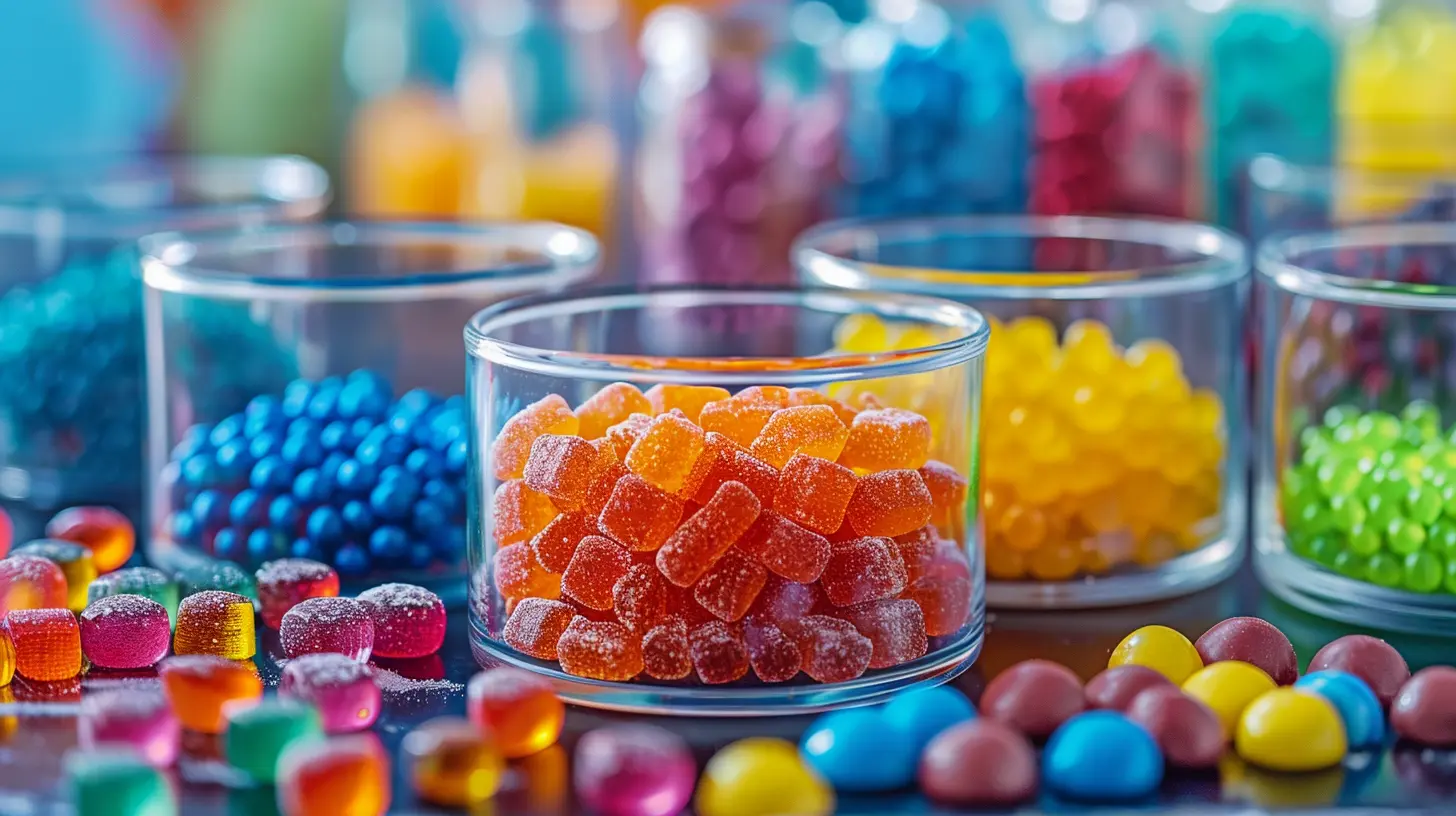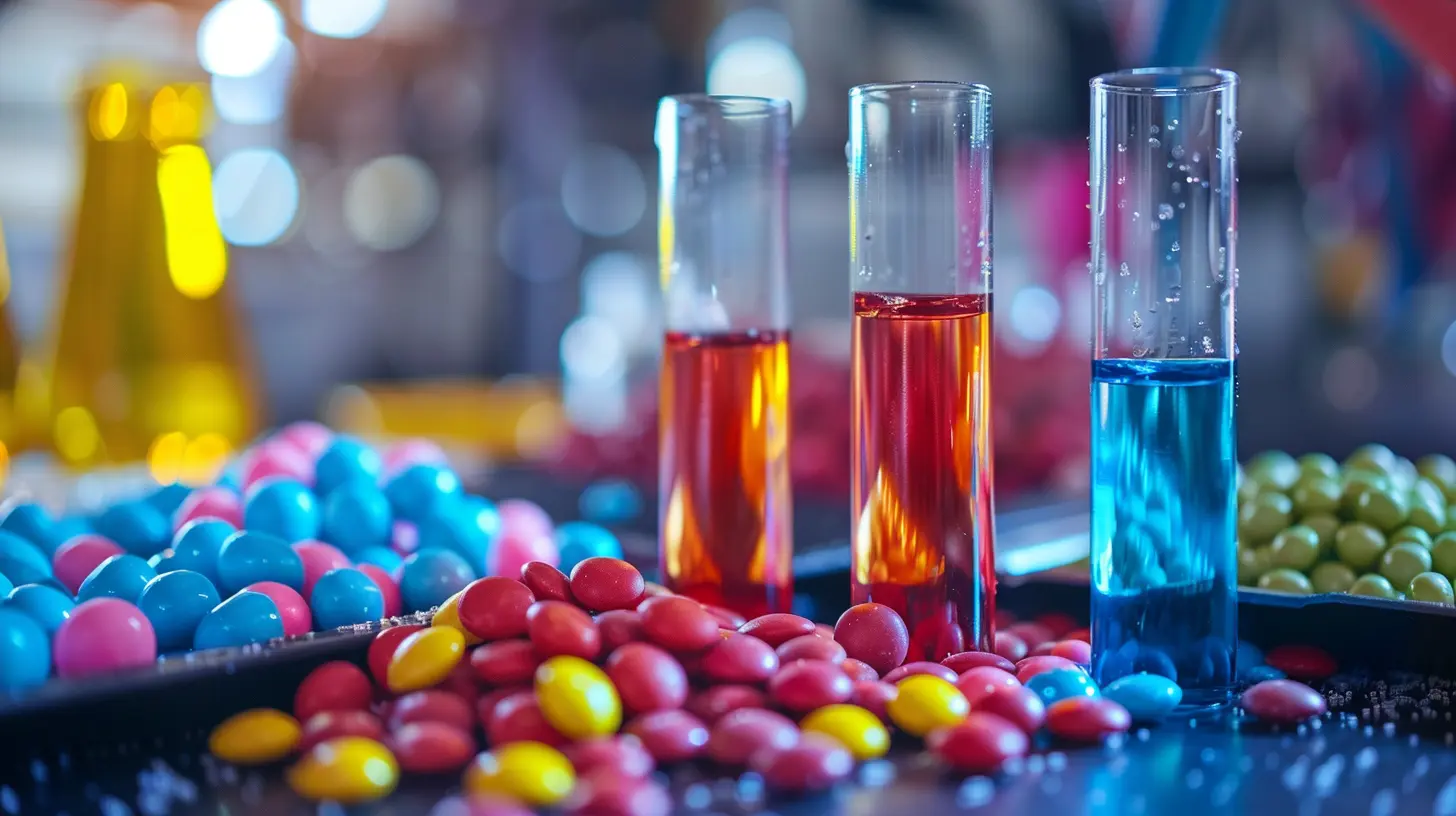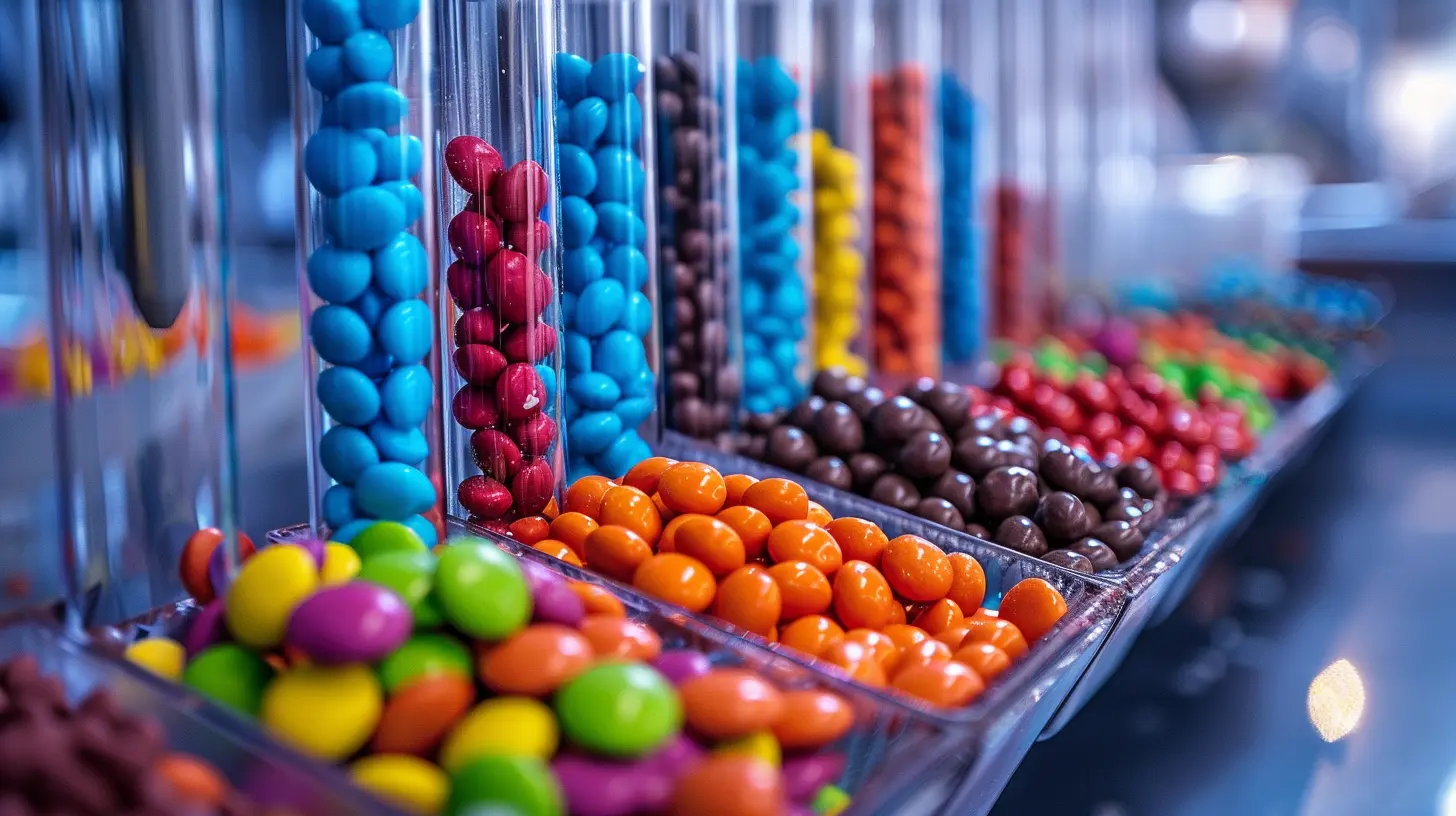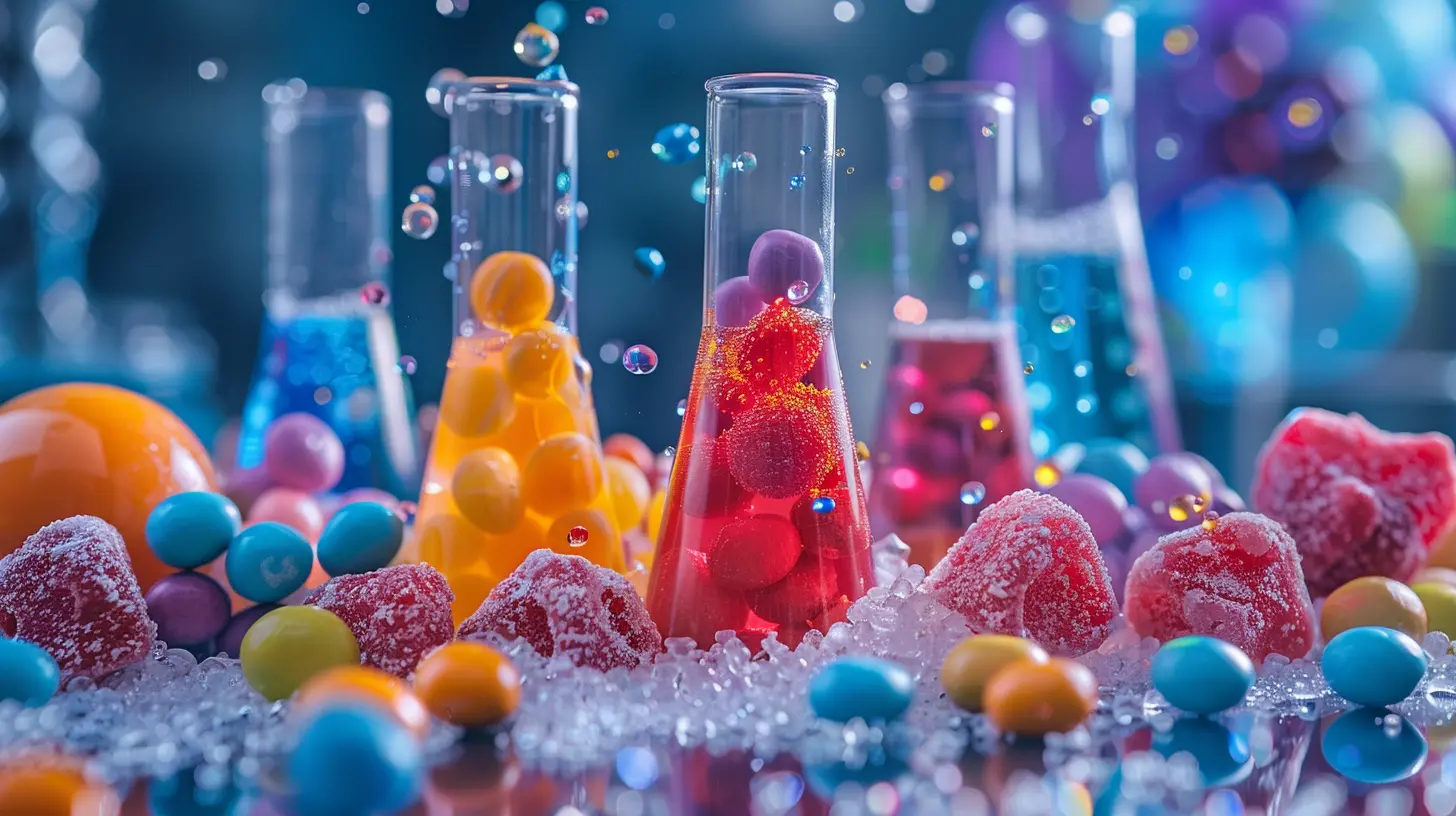Making Edible Science: The Chemistry of Candy-Making
19 September 2025
Ever wondered why cotton candy melts in your mouth or how caramel gets that deep golden color and rich flavor? Well, you're not alone. Candy has this magical ability to make people smile, and believe it or not—there’s way more science behind it than you might think. Making candy is more than just sugar and heat; it’s edible chemistry at its finest.
In this article, we’re going to unwrap the sweet science behind candy-making. We'll break down the chemical reactions, the role of each ingredient, and how temperature controls everything. So grab your apron (and maybe a piece of chocolate), and let’s dive into the surprisingly scientific world of candy-making... where kitchen meets chemistry lab.
The Sweet Science: What Is Candy, Really?
At its core, candy is all about sugar. But not just one type. There’s glucose, fructose, sucrose, and other variations—and each one behaves differently when heated and cooled. Candy-making is essentially about controlling sugar crystals and harnessing temperature to manipulate texture, taste, and appearance.Let’s simplify it.
You heat sugar. It melts. You change the temperature it cools at, and boom—you’ve got different types of candy: from brittle lollipops to chewy caramels. It's like tuning an instrument to play a specific song, only here, you're fine-tuning sugar to create specific treats.
Cooking Candy Is Chemistry in Action
Anyone can follow a candy recipe, but understanding what’s actually happening in the pot? That’s where the fun starts. Every time you cook sugar, you’re initiating a series of chemical changes based on how hot you're heating the mixture.Here’s a tasty truth: the boiling point of sugar syrup determines the final texture of your candy. Different temperatures = different types of candy.
The Candy-Making Temperature Chart
Below is a breakdown of candy stages and what they create:| Temperature (°F) | Stage Name | Texture Result | Examples |
|------------------|------------------|------------------------|------------------------|
| 230–235°F | Thread Stage | Syrupy & pourable | Sugar syrups |
| 235–240°F | Soft Ball Stage | Soft & moldable | Fudge, fondant |
| 245–250°F | Firm Ball Stage | Firm & chewy | Caramel candies |
| 250–265°F | Hard Ball Stage | Harder, stretchy chew | Marshmallows, nougat |
| 270–290°F | Soft Crack Stage | Crunchy with some bend | Butterscotch, taffy |
| 300–310°F | Hard Crack Stage | Brittly & glassy | Lollipops, toffee |
| 320–350°F | Caramelization | Deep color, rich taste | Caramel sauce, pralines|
Each of these stages isn’t just about hitting a number. It’s about controlling molecular changes in sugar.
Crystals: The Frenemy of Candy
Candy-making is a constant battle against sugar crystals. That's right—sugar’s natural tendency is to crystallize, and sometimes, that's bad news.Ever had gritty fudge or a crunchy caramel that’s supposed to be smooth? Blame sugar crystals.
To prevent unwanted crystallization, candy-makers use a few tricks:
- Stirring at the wrong time? Bad idea. Triggers crystallization.
- Additives like corn syrup or cream of tartar? They inhibit crystals.
- Brushing the sides of the pot with water? Keeps stray sugar from seeding crystals.
Managing crystals is like babysitting a toddler—you’ve got to keep them occupied, distracted, and out of trouble.
The Role of Ingredients in Candy Chemistry
Sure, sugar is the star of the show, but like any good performance, it needs a solid supporting cast. Let's look at the key players:1. Sugar (Sucrose)
- The main building block.- Provides sweetness, structure, and caramelizes when heated.
2. Corn Syrup
- Acts as an interfering agent to prevent crystallization.- Keeps textures smooth and chewy.
3. Acid (Lemon juice, Cream of Tartar)
- Breaks sucrose into glucose and fructose (a process called inversion).- Helps enhance flavor and disrupt crystallization.
4. Dairy (Butter, Cream, Milk)
- Adds richness, creaminess, and a mellow flavor.- Proteins and fats react with sugar during Maillard reactions (more on that soon).
5. Water
- Dissolves sugar at the beginning.- Boils off during cooking, increasing the sugar concentration.
Each of these ingredients nudges the final product in a different direction. Adjust them slightly, and you shift the entire texture and taste of the candy.
Chemical Reactions That Make Candy Magical
Now let’s look at two superstar chemical reactions responsible for most of the flavor and color we love in candy:The Maillard Reaction
This happens between sugars and amino acids (from dairy or nuts). It’s what gives browned foods that complex, toasty flavor.Think of the nutty, caramel-like taste of toffee or fudge. That’s the Maillard reaction saying hello.
Caramelization
This is sugar breaking down under high heat (320°F+). It changes color from clear to golden to deep amber. The flavor evolves from sugary sweet to slightly bitter and nutty.Caramel is all about precise control. Go too far? It burns. Not far enough? It's just sugar soup.
Texture Talk: Why Some Candies Snap and Others Stretch
Ever wonder why taffy stretches and peanut brittle snaps? It's all about moisture content and sugar concentration.- Hard candies have very little water left—they’re basically sugar glass.
- Chewy candies retain some moisture, giving them elasticity.
- Fudges and caramels have tiny, tiny crystals suspended in fat and air, creating a creamy melt-in-your-mouth sensation.
It’s like comparing glass to rubber to whipped cream—all made from sugar, just treated differently.
A Brief Look At Some Popular Candies & The Science Behind Them
Let’s break down how different candies are made and what makes each one scientifically interesting.Lollipops
Made by heating sugar to the hard crack stage (~310°F). Once cooled, the candy hardens into solid glass-like structures. No water left means long shelf life.Caramel
Begins with sugar, butter, and cream, heated slowly to around 245°F. The Maillard reaction between milk proteins and sugar gives caramel its flavor depth.Fudge
Cooked to the soft ball stage (~235°F), then vigorously beaten as it cools. The beating causes tiny sugar crystals to form, giving fudge its creamy texture.Marshmallows
Sugar is cooked, then beaten with gelatin and air. The result? Spongy, squishy sweetness. Basically, they’re science-made pillows.Kitchen Lab: Tools Every Candy Chemist Needs
If you're going to be a candy-making scientist, you've got to gear up. Here’s your essential candy lab toolkit:- Candy Thermometer: Absolute must. Knowing the exact temp is critical.
- Heavy-Bottomed Saucepan: Helps distribute heat evenly.
- Silicone Spatula: Won’t melt and is gentle on surfaces.
- Pastry Brush: Keeps sides of the pan clean of crystallizing sugar.
- Cooling Surface (like marble or silicone mat): Needed for candies like taffy or brittle.
Just like chemistry class, precision is everything. With sugar, even five degrees can make or break your batch.
Safety First! Sugar Burns Are No Joke
Quick PSA: Hot sugar is extremely dangerous. It sticks to your skin and keeps burning. Always respect the heat. Use oven mitts, wear long sleeves, and pay attention. Candy-making is fun, but don’t get cocky—it’s a science that bites back if you’re careless.Making Edible Science Fun for Kids (and Adults!)
Candy-making is a great way to introduce kids (and curious adults) to real-world chemistry. You’re not just making treats—you’re experimenting with temperature, reactions, and molecular structures.Try this:
- Make rock candy and talk about crystallization.
- Compare a batch of caramel stopped at 240°F vs. one at 250°F.
- Try inverting sugar with lemon juice and explain acid’s role.
It’s hands-on, delicious learning. What’s not to love?
Final Thoughts: Sugar, Science, & Sweet Success
Candy-making is the perfect blend of art and chemistry. You’re not just cooking—you're conducting edible experiments in texture, taste, and transformation. It takes patience, precision, and a little bit of daring.So next time you unwrap that jawbreaker or bite into a gooey caramel, just remember: behind every sweet treat is a whole lot of science. And now, you know the secrets.
Isn’t that sweet?
all images in this post were generated using AI tools
Category:
Science ExperimentsAuthor:

Bethany Hudson
Discussion
rate this article
1 comments
Kairo McLean
Great blend of fun and education through candy-making!
October 2, 2025 at 4:38 AM

Bethany Hudson
Thank you! I'm glad you enjoyed the blend of fun and education in candy-making!


